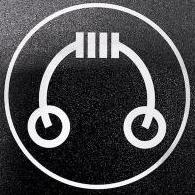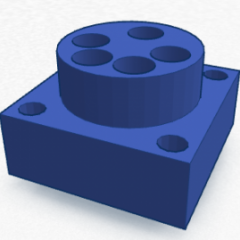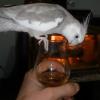Leaderboard
Popular Content
Showing content with the highest reputation on 05/30/2015 in Posts
-
OH MAN POSTING IN THE WRONG THREAD. WHAT KIND OF DUMBASS DOES THAT? I SURE WOULD NEVER DO SOMETHING LIKE THAT. Like putting an entire Slow post in the Gaming thread.3 points
-
Salami and pickled giardiniera pizza from the pizza truck outside of Hailstorm Brewing. Possibly the best pizza I've ever had.3 points
-
70-200mm with 2x TC, heavy crop. EOSE3096 by drjlo1, on Flickr2 points
-
2 points
-
2 points
-
One time, a long time ago, Al asked why little spikes sometimes appeared on his ice cubes. While the question was answered to everyone's satisfaction at the time, I thought this video may be interesting. http://www.iflscience.com/chemistry/why-do-spikes-form-ice-cubes2 points
-
Best wishes and good luck, Marc. Those surgeons are lousy people, take care2 points
-
2 points
-
The surgery is going to go just fine! It's that damn hospital food that's gonna kill him.2 points
-
Let’s finish off by looking at the output stage and how it interacts with the input stage. The original SRX used a 6CG7/6FQ7 dual triode in a simple balanced differential output. This tube has a maximum DC plate voltage rating of 330 volts, maximum plate dissipation of 4 watts per plate but a combined dissipation rating of 5.7 watts for both plates combined, and an amplification factor of 20. In the SRX this was run at a DC plate voltage of about 250 volts and 5 mA/plate for a total dissipation of 2.5 watts, which is quite conservative at 75% of max plate voltage and 44% of maximum plate dissipation. The 6CG7 was designed as a nine-pin equivalent of the 6SN7 (read: cheaper). If we want more power, we can go to the 6SN7’s bigger brothers, the 6SN7GTA and GTB, which are rated at 450 volts maximum DC plate voltage, 1500 volts peak positive plate voltage, and power dissipation rating of 5 watts/plate and 7.5 watts combined. Note the difference between the maximum DC plate voltage, 450 volts, and the maximum peak plate voltage, 1500 volts. Even if we run this tube at the maximum DC plate voltage, and drive it to its theoretical maximum sine wave output of 900 volts peak-to-peak, it is not going to spark over. This is quite unlike solid state, where even a momentary spike above the maximum rated voltage will let out the magic smoke. Substituting a 6SN7GTA will duplicate the gain parameters of the original design, but allow us to increase the power supply voltage and the standing current to 325 - 350 volts and 7-8 mA/plate, while still staying well below the maximum combined power dissipation. With the increased current, the cathode resistor needs to be decreased to about 1 kilohm. And, the RCA data sheet published in 1954 shows static plate curves going up to 650 volts with good linearity, which means that a differential stage can swing 1300 volts peak-to-peak with reasonable distortion. With current loads the Miller capacitance is about 84 pf, and two dual triodes (one per channel) need about 7.5 watts for the heaters. Another possibility is KG’s favorite small power tube, the 6S4A. This has an amplification factor of 16 = 24 dB, but has a significantly lower Miller capacitance, about 41 pf. Heater current is 0.6 amps per tube, or 15 watts total. Because this is a single triode, matched pairs are needed for each channel. Interestingly, even though the 6S4A has a higher maximum DC plate voltage of 550 volts and power dissipation of 8.5 watts, more than the 6SN7GTA, the RCA data sheet only shows 6S4A plate curves up to 470 volts, and TungSol shows plate curves up to 550 volts. What about a triode-connected EL34? With 800 volts maximum plate voltage (although Mullard lists 600 volts max for triode connection), 140 mA and 25 watts maximum plate dissipation it dwarfs the other two. But it has a lower voltage gain of 11 = 21 dB, as well as a higher Miller capacitance around 120 pf, and pulls 1.6 amps heater current, so 6.4 amps total, or about 40 watts just for the heaters. Again, matched pairs are needed for each channel. To simplify the comparison between these output tubes, let us assume +/- 350 volt supplies, 12AT7 input section with 42-44 dB gain, and a theoretical maximum 1400 volt peak-to-peak output. We will use the same slew rate criteria as in the output stage current thread, assuming full power 6 kHz sine wave as a worst case signal, and we will also assume that that the output stage uses current loads to improve function and maximize the voltage gain of the stage. For a 6SN7GTA output stage, the input stage has to deliver: Peak voltage = 35 volts Peak current = 0.22 mA Total open loop gain: 68-70 dB Open loop roll-off frequency: 11 kHz For a 6S4A output stage, the input tube section has to deliver: Peak voltage = 44 volts Peak current = 0.24 mA Total open loop gain: 66-68 dB Open loop roll-off frequency: 22 kHz For an EL34 output stage, the input tube section has to deliver: Peak voltage = 63 volts Peak current = 0.44 mA Total open loop gain: 63-65 dB Open loop roll-off frequency: 8 kHz These calculations include the current used in the input stage plate and output stage grid resistors. Notice that the 6S4A and EL34 tubes need higher voltages from the input stage for the same output because of their lower voltage gains. Also note that the differences in open loop roll-off frequency due to the differences in Miller capacitance between these tubes. Now, remember that one of the limitations of the SRX input section is the puny current, approximately 0.55 mA per side, or 1.1 mA total. Usually, amp designers keep distortion lowest in the input and driver stages, with the maximum distortion occurring in the output stage. John Broskie at TubeCad suggests that a good rule of thumb for low distortion in tube circuits is that the maximum current drive required be 20% of the total current or less. With the 6SN7GTA as the output tube, the maximum current demand on the input stage just meets this criteria, the 6S4A comes very close to meeting it, whereas using the EL34 as the output tube, the maximum current drawn from the input stage reaches 40% of the total input stage current. Next let’s look at the closed loop frequency response. Since the open loop gain rolls off at roughly 6 dB/octave above the frequencies calculated above, the closed loop frequency response will roll off when the closed loop gain equals the open loop gain. The SRX has a closed loop gain of 54 dB, so using 12AT7 input tubes, the -3 dB frequency is roughly as follows: 6SN7GTA: 55 kHz 6S4A: 90 kHz EL34: 22 kHz So the 6SS7GTA and 6S4A seem to be the best choices for output tubes, with low distortion operation of the input stage and good closed loop frequency response. The 6S4A provides 1-2 dB higher power potential and more extended high frequency response, but has double the heater current, and because they are single triodes, they need to be matched pairs for each channel. The 6SN7GTA is the easiest to drive, has significantly lower filament current and, at least in my unselected samples, close matching between tube sections, with plate voltages within 5-10 volts of each other. The measured frequency response of the SRX Plus using 6SN7GTA tubes matches the calculated response, and is nearly identical to the measured response of the original KGSS. One more example: if we use 6SN7s in the input stage and EL34 output tubes, the total open loop gain is only 58-62 dB, so there is only 4-8 dB of feedback available at low frequencies, and the -3 dB point is around 14 kHz. This is essentially the ES-X repair/restoration that spritzer reported on in 2010. Is it any wonder that he noted that “the HF does lack some sparkle and presence…?” The low feedback might also partially explain his other comments that “the midrange doesn't have the projection of the BH and is a bit thicker than it should be. The bass goes deep but is a bit too round and boomy…” His later substitution of 7F7s (6SL7 equivalents) in the input stage was “the biggest” improvement, which is not surprising since it significantly increased the negative feedback margin and bumped the -3 dB point up to around 22 kHz, bringing the circuit closer to its optimum function. We see that both the choice of input tubes and output tubes can significantly affect the function of the circuit as a whole. Sub-optimum tube choices in either stage can significantly worsen overall performance. The reason that these tube choices make such a difference is that the circuit is so economical – it uses just enough stages and just enough tubes to do the job, and no more. But that means that each tube must contribute a high gain. There’s nothing wrong with a 6SN7 as an input stage tube, or an EL34 as an output tube, but they are not the best tubes for this circuit. Thus far I’ve discussed the basic SRX output stage, now let’s move on to the modifications in the SRX Plus. In the output stage current thread, I show the benefits of using current loads instead of plate resistors. The SRX Plus does this, but in addition the cathode resistor is replaced by a current sink. This improves the differential balance just as it does for the input stage. But it has another benefit – the output tubes are now totally isolated from the power supply, and from the other channel. All they see is the input signal, the other differential tube, and the headphone load. When the current loads are high enough impedance they are virtually “invisible” to the output tubes – all the signal current goes to drive the headphones, maximizing their efficiency. This provides the most stable possible environment for the output tubes, and maximizes channel separation because the output tubes in one channel cannot “see” the other channel via the power supply. The result, quite simply, is the best performance the circuit is capable of. Now, the reason for using cascoded current sources in this design was not to have better sounding current sources, whatever “better sounding” means, it was to have non-sounding current sources. They should set the circuit parameters while being sonically inaudible. My argument is, the closer a practical current source approaches the ideal of infinite impedance with no noise, the less it can contribute to the sound. A cascode current source comes respectably close to that goal with a minimum number of parts, and allows the active device to have a voltage swing within 15-20 volts of the B+/- supplies. However, we run into a problem when we have both current loads and current sink, and that is that current can neither be produced nor destroyed. So, to provide a path for unmatched current to drain harmlessly, there is an adjustable resistor string between B+ and the cathode current sink. As far as I know this little bit of circuitry is unique. This resistor string is effectively in parallel with the current sink for AC signals, and while this does compromise the impedance of the current sink, at 220 kilohms, it is still much higher than the original 1.5 kilohm resistor, and in fact, is as high or higher than a simple 10M90S current sink. Also, adjusting this resistance varies the DC offset of the output plates, allowing them to be zeroed. And, as mentioned in a previous post, adjusting the current loads can help balance the voltage between the plates, although, with the 6SN7GTAs I have tried, this isn’t really necessary as the plate voltages have been within 5-10 volts of each other with my fixed current loads. The tubes are run quite conservatively. The 12AT7 input tubes are run at less than 30% of maximum DC voltage and less than 10% maximum power dissipation, so they are barely turned on. The 6SN7GTA output tubes are run at less than 80% of maximum DC voltage and less than 65% of maximum power dissipation, so they are coasting. NOS (new old stock) industrial tubes running under these conditions can be expected to last 5000-10,000 hours. You can further improve tube life by running the filaments at slightly lower than rated voltage, e.g. 6 volts instead of 6.3 volts, or 12 volts instead of 12.6 volts. Now, since we are using both tubes and transistors, is this a hybrid amp? Well, not in the sense of, say, the Blue Hawaii or T2, where both tubes and transistors are in the signal path. In the SRX Plus, the solid state is all current sources which are used to set circuit parameters and maximize the performance of the tubes, which do all the handling of the signal voltage and current. So this is still a tube amplifier, but with solid state support elements. If it has any sonic character it should be tube-like. A couple comments about tubes versus transistors. One of the enduring controversies in audio is whether one sounds better than the other, which I’m going to sidestep. I do think that tubes make a good match for electrostatics because they are high voltage low current devices. But there are practical considerations. First, while tubes physically somewhat fragile, they are electrically more rugged. When I was adjusting my SRX Plus, there were times when one plate on a 6SN7GTA output tube was sitting at +300 volts while the other was around -300 volts, meaning that one cathode to plate voltage was over 600 volts for a minutes at a time with no harm done, despite a maximum DC cathode to plate rating of 450 volts. Do that with a set of transistors rated for 450 volts and you’ll need to replace the remaining fragments. Second, the tube types used in the SRX Plus should not become obsolete in the forseeable future, as has been the case with a number of high voltage transistors. These tube types are used in guitar amps, which have a continuing demand that far exceeds the demand for audiophile tubes. So, is all this worthwhile? Well, the ES-X is the nearly identical circuit except using EL34 output tubes, which are less well suited for this circuit, and here’s what spritzer had to say about that amplifier in 2010: “The T2 and the Blue Hawaii are the best you can get and for good reason. They cost a lot to build (the T2 quite a bit more than any BH) but the money is well spent. Stable PSU and enough current reserve to never leave the headphones wanting. A KGSSHV run at full tilt would also qualify here. One step further down the ladder would be the current version of the ESX with a CCS loaded output stage. The amp with just the old plate resistors is very good but running the tubes properly would make a world of difference.” In my opinion the circuit is better than most. It is simple yet sophisticated, and has the inherent linearity of triode tubes. The dual differential design means it is inherently balanced, and it will stay that way. With its low parts count it is inexpensive and simple enough to be built point-to-point. Given that the output stage of an amplifier is where there is the most potential for distortion, the use of cascoded current loads means it should perform better than designs that use load resistors or inductors such as the Egmont, RSA A10, or Woo WES, or designs that use poorly designed current sources such as the eXstatA or Liquid Lightning (modest, aren’t I?). The SRX Plus lacks the sheer power of a T2, Blue Hawaii or KGSSHV but it comes respectably close – within a couple of dB - for a lot less. If those are Stereophile Class A, then the SRX Plus is Class B, “the next best thing to the very best sound reproduction,” and at a bargain price. So there you have it, a detailed analysis of the SRX Plus, an optimized version of the Stax SRX tube amplifier using solid state support. Any regulated power supply such as the KGST or mini KGBH PS adjusted to 325-350 volts should work fine with this. When the article comes out I can discuss the shunt regulated power supply, but I can tell you it’s a pretty basic supply. Happy building!2 points
-
2 points
-
You wouldn't say that if you just had the day I had trying to track down the short(s) in a board.1 point
-
i thought it was an arc in the pic, but it was a whisker that i missed. had that whisker not been current limited by a 1M resistor, it would have most likely blown apart1 point
-
Now you know why we keep increasing the clearance of the ground plane around the traces. The KGSSHV power supply was he biggest headache as there we have roughly 700V of raw DC floating around. My longest bit of troubleshooting was last summer, two months to find a phantom noise in one of my BHSE's. Came and went but was finally tracked down to the TV antenna causing a ground loop.1 point
-
So, it appears Justin Wilson knows about his stuff, a little bit... http://www.head-fi.org/t/439657/headamp-blue-hawaii-special-edition/7200#post_11647599 arnaud1 point
-
Good luck with your surgery Marc. Let us know that you are ok as soon as you can.1 point
-
1 point
-
Test Tone @ Home live right now: http://mixlr.com/illuminator/chat1 point
-
1 point
-
Belated glads that both Shelly and Naaman survived the floods. Marc - trust the knife will fix your bad parts. Swift recovery ...1 point
-
Yeah, well if you're ever looking for the other type of "CDs", I'm sure I can get them sent to you anywhere in the US. And good luck with the surgery. Count your limbs before and after!1 point
-
1 point
-
My KGST is done. What a wonderful sounding small amp it is! I still need to tidy up my wiring, but really can't wait to hear how it sounds.1 point
-
Wow! Those are a big delicacy around here. People go morel hunting and sell them for good money, or keep them and show them off to friends. I've read about people falling off cliffs while morel hunting. Nice find!1 point
-
1 point
-
Just found a schwack of morels in my lane. Eleanor doesn't trust my mushroom ID skills, but she's out of town. I've never tried one, but they are supposedly delicious.1 point
-
1 point
-
Walked 26.2 miles around London today as part of the post stretch recovery plan. Slowest marathon ever?1 point
-
1 point
-
yep it was in the power supply... currently the screws are all stainless. Because i have a bunch of them, and they look cool. Got nylon screws coming, but if i can find peek screws that is even better. I use peek tubing for all the LC's... on second thought, at about $7 per screw, and 64 screws needed... maybe spritzer will do it. I know there is no reason not to be excessive, but that is a bit nutty. Need to verify that they are really stronger first.1 point














